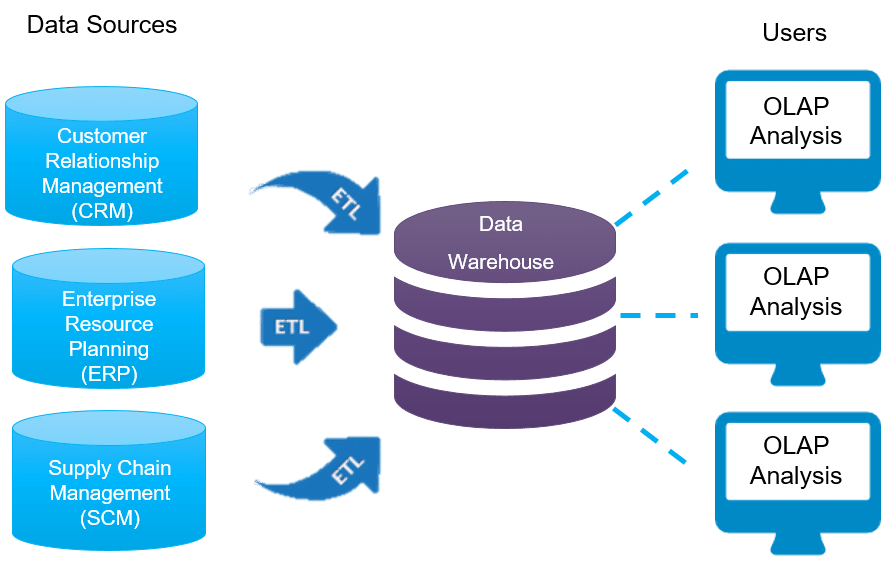A data warehouse is a relational database that is designed for query and analysis rather than for transaction processing. It usually contains historical data derived from transaction data, but it can include data from other sources. It separates analysis workload from transaction workload and enables an organisation to consolidate data from several sources.
In addition to a relational database, a data warehouse environment includes an extraction, transportation, transformation, and loading (ETL) solution, an online analytical processing (OLAP) engine, client analysis tools, and other applications that manage the process of gathering data and delivering it to business users.
The information gathered in a warehouse can be used in any of the following domains:
Tuning Production Strategies – The product strategies can be well-tuned by repositioning the products and managing the product portfolios by comparing the sales quarterly or yearly.
Customer Analysis – Customer analysis is done by analysing the customer’s buying preferences, buying time, budget cycles, etc.
Operations Analysis – Data warehousing also helps in customer relationship management and making environmental corrections. The information also allows us to analyze business operations.



